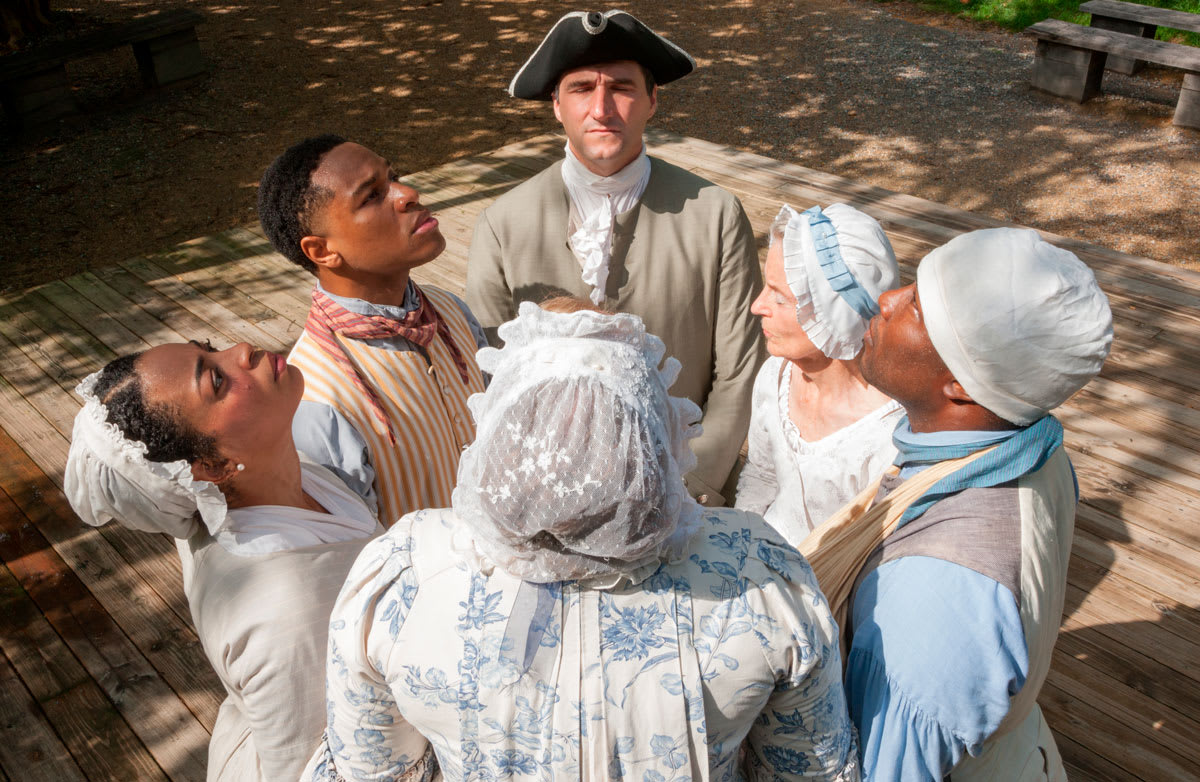Change starts with education. Onsite and online, we’re committed to sharing America’s enduring story — especially those that have long gone untold. Here are some resources from our museum and other cultural institutions to help us all learn from the freedoms denied in our past and understand how to talk about race and inequality today.
The National Museum of African American History and Culture was founded for the purpose of telling the American story through the lens of African American experience. On their website, you can explore their collection at your own pace and read posts from their curators about stories they find particularly powerful. The museum has recently launched an excellent online portal devoted to helping Americans talk about race, which includes a page outlining the historical foundations of race.
To reflect on the institution of transatlantic slavery and explore sites and museums across the globe that present the history and memory of the slavery and the slave trade, we recommend the Slavery and Remembrance guide Colonial Williamsburg created in collaboration with UNESCO’s Slave Route Project.
Virginia Humanities’ Encyclopedia Virginia is a great way to begin learning about African American history in the commonwealth, starting with the arrival of the first Africans in 1619. And in this episode of their radio show, “With Good Reason,” journalists and public historians reflect on racism past and present in the aftermath of 2018's tragic events in Charlottesville.
If you’re looking for a good reading list of contemporary books that grapple with racial inequality and injustice, this blog post from our neighbors at William & Mary Libraries may be helpful.
Colonial Williamsburg is committed to sharing the stories of ALL the people who lived and worked in this community in the 18th century; the stories that are difficult or uncomfortable may be especially important for us to hear. Aired as part of CW’s ongoing series of Facebook Live programs, you can watch these interviews with Oney Judge Staines, Gowan Pamphlet, and James Armistead Lafayette as they share their full and complex lives.
To learn more about our actor interpreters bring to life the full and complex lives of free and enslaved African Americans, watch a panel discussion we hosted in July 2019 as part of our 2019 commemoration of the 40th anniversary of African American Interpretation or read these magazine articles in Trend & Tradition: Half the History, Sharing the Spotlight, Between Worlds, and Honest Friend.
Colonial Williamsburg offers several educational resources, including Electronic Field Trips and accompanying guides about this topic on our Education Resource Library, a free resource available for all. Suggested titles within the library are: “Harsh World, This World,” “The Freedom Quest of Oney Judge,” and “Jim Crow.”
Colonial Williamsburg’s Rockefeller Library shares this commitment and strives to provide access to balanced and diverse educational resources. Several sources that highlight the experiences of Williamsburg’s African American residents are available on our website. See selected links below.
Research Guides:
Research Reports:
The Negro in Eighteenth Century Williamsburg (“Negro” was a common noun in the 17th-, 18th- 19th- and 20th- centuries. “Negro” is no longer used, except for political purposes. This report was written in 1957, when white scholars and white society used “negro” as a general term for people of African descent. This report contains important information and scholars still make use of it, despite the antiquated language.)
Aspects of the African American Experience in Eighteenth-Century Williamsburg and Norfolk
A History of Black Education and Bruton Heights School, Williamsburg, Virginia
Colonial Williamsburg Publications:
Broken Chains, the departmental newsletter of the Department of African American Interpretation, 1992-1994.
Visual Resources:
Albert Durant Collection, encompassing photoprints, negatives, slides, and personal papers that document the photographic production of Williamsburg’s first black city-licensed photographer.
Ongoing Research
Our archaeology department is also working to uncover evidence that tells us more about the enslaved population in 18th-century Williamsburg. Check out their current project at Custis Square here.
